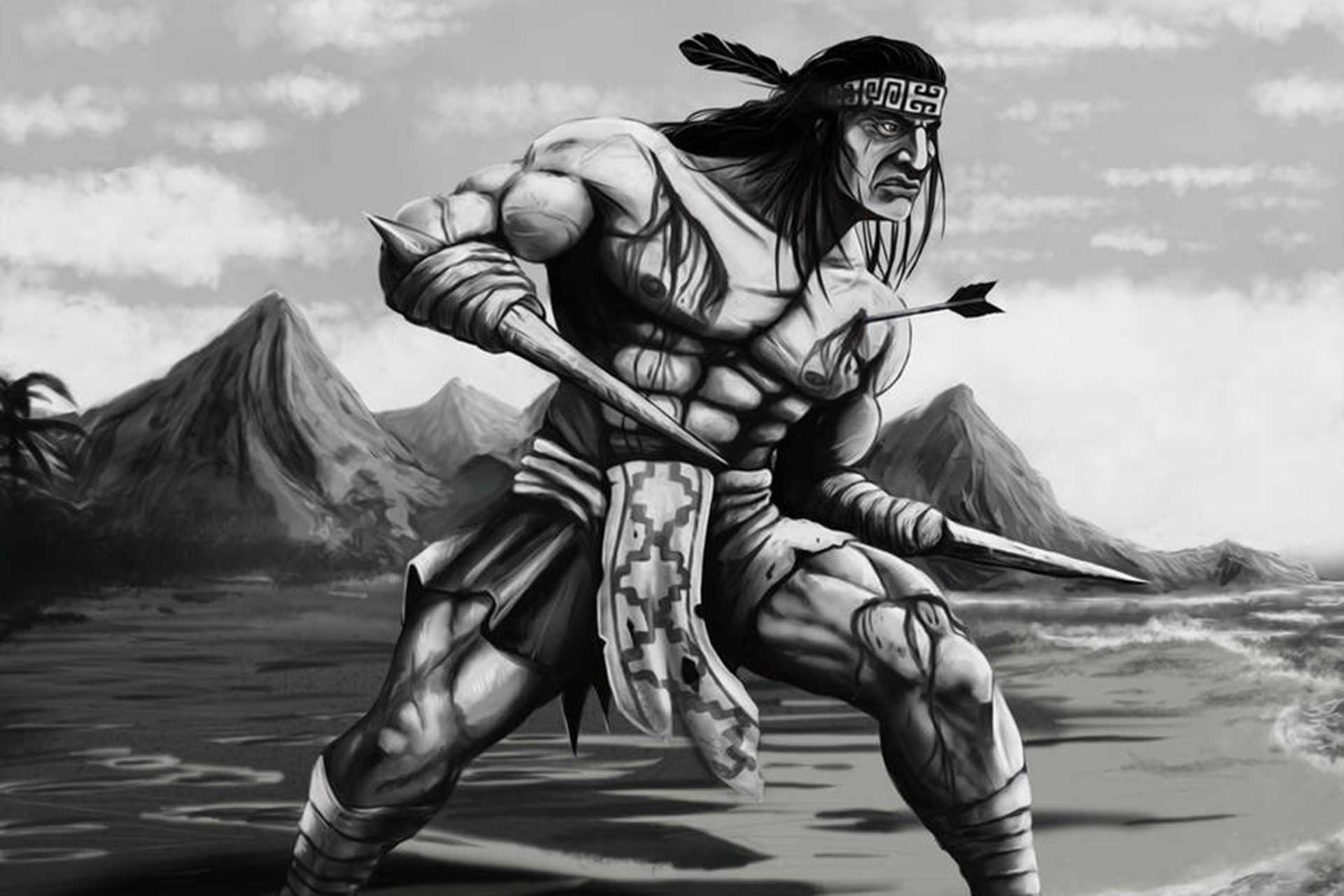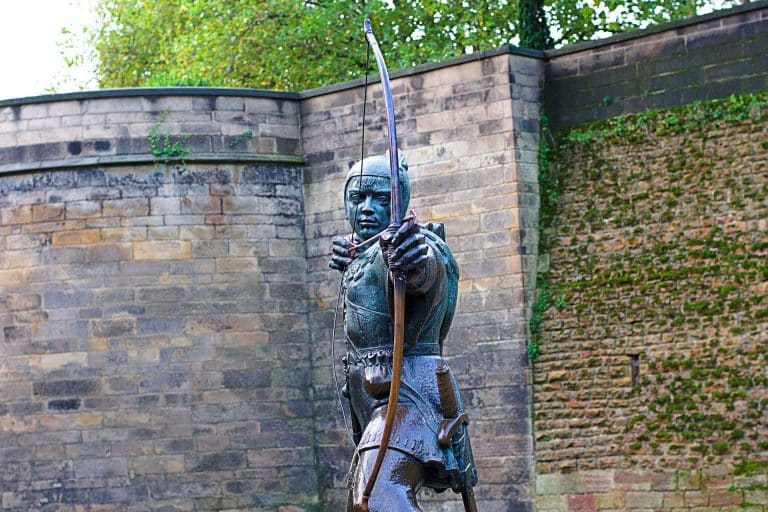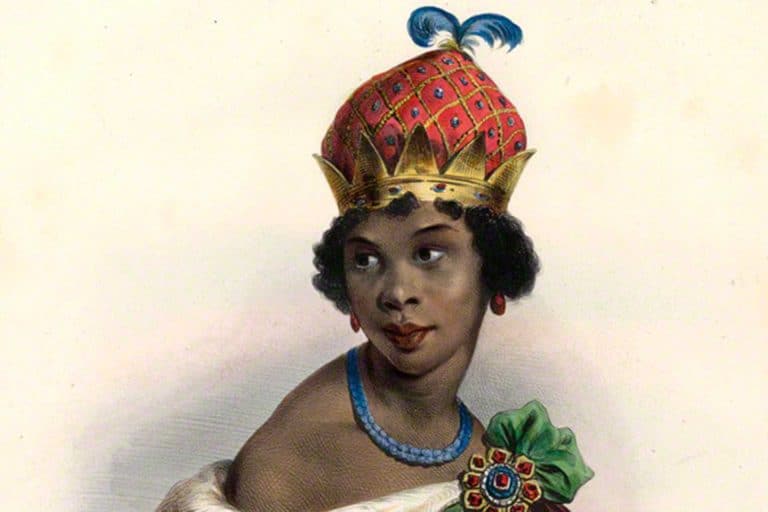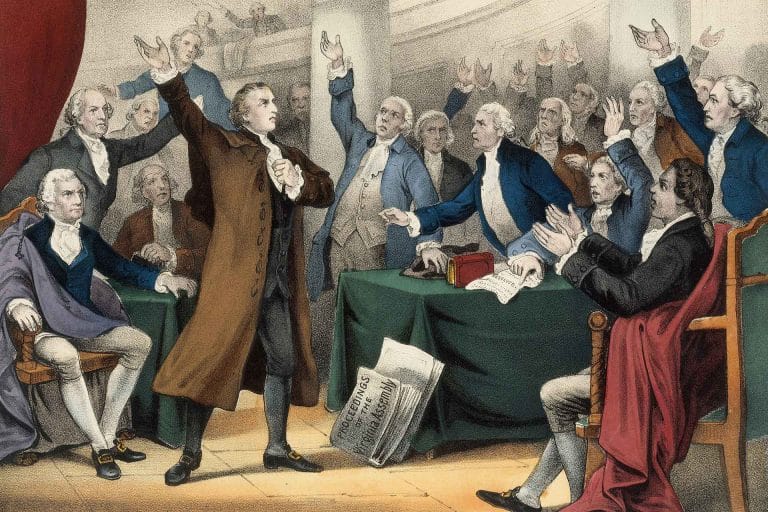Cutting Edge: The Tale of Galvarino’s Knife-Handed Battle
Galvarino, a warrior of the Mapuche people, defied the odds and lead his people in the fight against Spanish conquistadors. This saga unfolds in the 16th century during the Arauco War, a conflict that pitted the indigenous Mapuche against Spanish invaders in what is now Chile. After being captured and having both hands amputated by the Spanish as punishment turned his misfortune into a symbol of resistance by attaching knives to his arms and returning to battle. His incredible story of resilience, leadership, and valor has since become a potent symbol of the broader struggle for indigenous rights and autonomy.
Galvarino’s Early Life & the Mapuche
The early life of this incredible warrior before battling the Spanish remains shrouded in mystery, as there are limited historical records available about his upbringing. What is known is that he was a Mapuche warrior, a part of a group of indigenous inhabitants in present-day Chile and Argentina, long before the arrival of the Spanish. Like many of his compatriots, he would have been trained in the art of war from a young age. The Mapuche people, known for their prowess in battle, were considered one of the most formidable native tribes in the region.

Their society was structured around family clusters or lineages known as ‘Lofs,’ led by a chief called a ‘Lonko’. Despite the relatively decentralized nature of their society, the Mapuche had a strong warrior tradition and could mobilize quickly for conflict under the leadership of a ‘Toqui,’ a military leader chosen for the duration of a conflict.
The Mapuche people, whose name translates to ‘people of the land,’ have a long and rich history in the region. They have inhabited the territories of present-day Chile and Argentina for thousands of years, developing a unique culture, language, and social structure. Their livelihood was primarily based on agriculture, supplemented by hunting and gathering. Despite their agricultural practices, the Mapuche maintained a semi-nomadic lifestyle, relocating their settlements seasonally to optimize resources. This lifestyle contributed to their extensive knowledge of the local terrain, which would prove advantageous during conflicts.
The Mapuche had their own religious beliefs and cosmology, centered around a dualistic struggle between good and evil forces. Their spiritual world was inhabited by a host of deities and spirits, with a supreme god, Ngenechen, overseeing all. The Mapuche also practiced ancestor worship and believed in the power of ‘Machi,’ shamans who played a critical role in their society as spiritual leaders and healers.
Before the arrival of the Spanish, the Mapuche had already encountered other foreign invaders, namely the Incas. In the late 15th century, the Inca Empire attempted to expand its territory southward into Mapuche lands. However, the Mapuche successfully resisted Inca domination, showcasing their military prowess and determination to maintain their independence.
The Mapuche’s first contact with the Spanish occurred in 1536 when Diego de Almagro’s expedition passed through their territory. Initial interactions were relatively peaceful, but as the Spanish colonization of the region intensified, conflicts between the two groups became inevitable. The Spanish, driven by a desire for gold and other resources, began to encroach on Mapuche lands, leading to the Arauco War, a series of conflicts that spanned over three centuries.
The Fateful Battle of Lagunillas
In anticipation of an invasion by the Spanish forces under the command of Governor García Hurtado de Mendoza, the Mapuche strategically organized their defense forces across three locations: a pucará on Andalicán height, south of Concepcion, covering the coast of Arauco, and the remaining forces near Millarapue and Tucapel. On October 29, Mendoza’s well-armed army departed from Concepcion, marching southward to the Bio-Bio River. Once there, he dispatched a small force upstream to cut wood and build rafts, diverting the Mapuche’s attention while he used boats and specially constructed rafts to ferry his thousand horses across the river. This maneuver proved successful, allowing his entire army to cross unopposed at the river’s mouth.
After successfully crossing the river, Mendoza advanced a league further south to some shallow lakes at the Araucanía’s Nahuelbuta Range’s foot. He encamped there, sending a small cavalry detachment under Captain Reinoso to the south to scout the next day’s march. When Reinoso’s force encountered the Mapuche forces on Andalicán, they were attacked, forcing Reinoso to retreat while sending word to Mendoza about the advancing Mapuche. Concurrently, two Spanish soldiers, who left the camp without permission to gather fruit, stumbled upon a large Mapuche force lying in ambush. Although one soldier was killed, the other escaped, alerting the camp of the enemy’s proximity.
On receiving Captain Reinoso’s message, Governor Mendoza dispatched reinforcements of fifty cavalry and twenty arquebusiers under Rodrigo de Quiroga. This reinforcement helped Reinoso and Quiroga slow the Mapuche advance through marshes and ponds. Alerted to the ambush, Mendoza hastily organized his forces for battle, successfully repelling the initial Mapuche assault. Soon after, Reinoso and Quiroga rejoined the main army with the Mapuche forces from Andalicán close behind, triggering a general engagement.

Despite being outnumbered, the Spanish forces, armed with arquebuses and artillery, disrupted the Mapuche attacks, and the cavalry exploited the ensuing chaos, driving the Mapuche back into a marsh for protection from the horsemen. However, the Spanish infantry pursued them into the marsh, and after a fierce resistance, the Mapuche retreated into the wooded hills behind the marsh. The Spaniards cautiously pursued, aware of potential ambushes, and returned in the late afternoon with prisoners. The battle resulted in two Spaniards killed and many seriously wounded, while the Mapuche suffered 300 fatalities and 150 captives, including Galvarino.
As punishment for insurrection, Mendoza ordered the amputation of the right hand and nose of some prisoners, while others, including Galvarino, had both hands cut off. The prisoners were then released as a lesson and a warning to the rest of the Mapuche. Mendoza sent him to inform General Caupolicán, the leader of the Mapuche forces, about the number and quality of the Spanish forces that had entered their land again. It was a psychological tactic to instill fear and prompt submission without further conflict.
Governor García Hurtado de Mendoza was a seasoned military leader appointed by King Philip II of Spain to suppress the Mapuche uprising. His tactics were often ruthless, as demonstrated by the punishment he inflicted on Galvarino and the captured warriors. Mendoza believed that by displaying such brutality, he could break the will of the Mapuche and force them into submission. However, this underestimation of the Mapuche’s resilience and determination only fueled their resistance.
Strengthened Resolve
Despite the severe mutilation he endured, Galvarino did not bow down to the Spanish intimidation. Instead of succumbing to despair, he transformed his tragedy into a symbol of resistance. He fastened knives to the stubs of his arms and returned to his people, not with a message of submission, but with a call to arms. His resolve and determination inspired his fellow warriors.
In the aftermath of the amputation, he turned his personal tragedy into a symbol of resistance against Spanish oppression. Instead of succumbing to despair, he transformed himself into a living testament of the cruelty inflicted upon his people by the Spanish. Galvarino’s indomitable spirit played a crucial role in bolstering the resolve of the Mapuche resistance. Galvarino called for the Mapuche to launch a larger campaign against the Spanish and even invoked the memory of Lautaro.
Lautaro, a young Mapuche who had served as a page to the Spanish commander Pedro de Valdivia, was another influential figure in the Mapuche resistance against Spanish colonization. He gained military experience by observing the Spanish while serving Valdivia, and eventually escaped, returning to his people and using his knowledge to help lead the Mapuche in their fight against Spanish rule. Lautaro played a pivotal role in shaping the Mapuche military strategy, using his firsthand knowledge of Spanish tactics to his advantage. Galvarino urged the Mapuche to resist the Spanish in the same tenacious style as Lautaro, emphasizing the importance of employing strategic and tactical knowledge to strengthen their resistance.
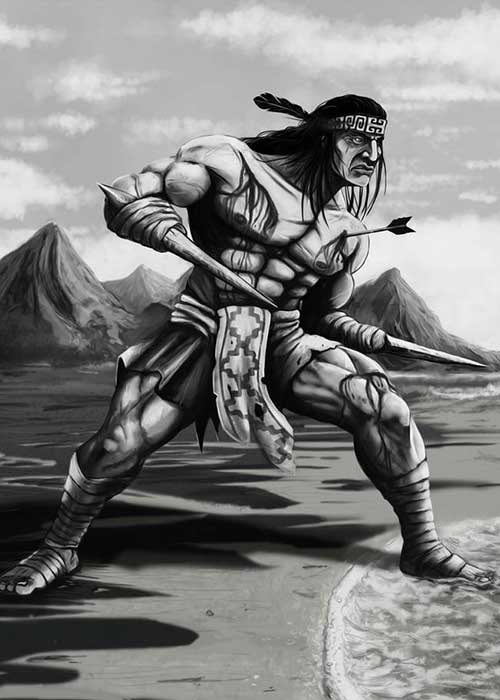
by
AnderTRON
This resilience and resolve did not go unnoticed by the Mapuche leaders. Recognizing his determination and the symbolic power he held, they decided to entrust him with a squadron that would fight alongside the Mapuche chief, Caupolicán, in the upcoming campaign. Caupolicán was the Toqui, or war leader, of the Mapuche forces and played a crucial role in organizing and leading the resistance against the Spanish. Additionally, his appointment to this position underscored his importance as a symbol of resistance and his capabilities as a leader, despite his physical limitations.
As the campaign unfolded, Galvarino proved to be more than just a symbolic figure; he was a capable and inspiring leader who led his squadron with skill and determination. His presence on the battlefield, knives fastened to his amputated arms, served as a powerful reminder to the Mapuche warriors of the cruelties inflicted by the Spanish and the need to fight back with unwavering resolve. Galvarino’s story is not just one of personal resilience, but also of the power of symbols and the importance of strategic leadership in the face of oppression.
Battle of Millarapue & The Aftermath
The Battle of Millarapue was a pivotal encounter between the Mapuche forces and the Spanish invaders led by Governor García Hurtado de Mendoza. The Mapuche, under the leadership of their Toqui Caupolicán, had gathered a force of around 20,000 warriors. On the other hand, the Spanish force, commanded by Mendoza, consisted of approximately 500 soldiers, supported by a contingent of indigenous allies.
The battle commenced with both sides engaging in fierce combat. The Mapuche, despite being outnumbered, fought valiantly and inflicted significant casualties on the Spanish forces. Galvarino, leading his squadron with the knives attached to his arms, demonstrated extraordinary courage and determination. He managed to kill Mendoza’s second in command, a notable event that boosted the morale of the Mapuche forces. However, the Spanish, with their superior weaponry and tactics, ultimately gained the upper hand.
The Mapuche forces suffered heavy casualties during the battle. It is estimated that around 3,000 Mapuche warriors were killed, while the Spanish lost around 40 men, with many more wounded. Despite the numerical superiority of the Mapuche, the technological advantage of the Spanish, coupled with their well-organized tactics, proved decisive in the outcome of the battle.
After hours of intense fighting, the Mapuche forces began to retreat. Galvarino, who had fought with unwavering determination and had inspired his fellow warriors with his bravery, was captured by the Spanish during the retreat. His capture marked a turning point in the battle and served as a blow to the morale of the Mapuche forces.
Following his capture, he was brought before Mendoza. Despite the brutal punishment he had already endured and the loss suffered in the battle, he remained defiant. Some sources say Galvarino was “fed to the dogs”, however, most sources concur that he was sentenced to execution by hanging. His execution was carried out in front of the remaining Mapuche prisoners as a warning to those who continued to resist Spanish rule.
His death marked the end of a chapter in the Mapuche resistance against Spanish colonization. His bravery, both in the face of brutal punishment and on the battlefield, made him a symbol of resistance for the Mapuche people and an inspiration for future generations.
Despite the loss at Millarapue and the execution of one of their most iconic leaders, the Mapuche continued to resist Spanish rule for many years, demonstrating the same resilience and determination embodied by Galvarino.
The Mapuche Resistence Survives
The Battle of Millarapue did not mark the end of the Mapuche resistance against the Spanish colonizers. Despite the loss of one of their iconic leaders, including Galvarino, and the heavy casualties suffered during the battle, the Mapuche people continued to demonstrate resilience and determination in their struggle against the Spanish invasion. The Mapuche forces, under the leadership of new leaders, organized several other military campaigns and rebellions in the subsequent years.
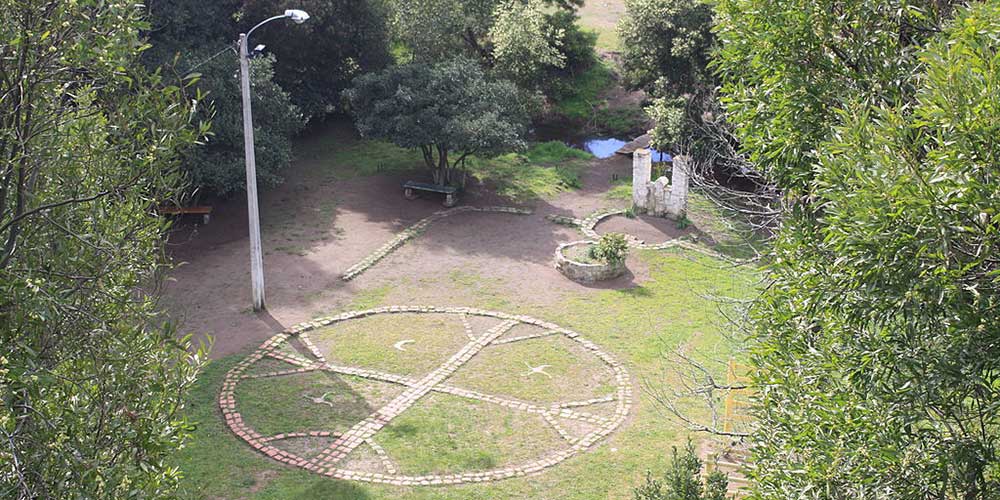
B.diaz.c, CC BY-SA 3.0 https://creativecommons.org/licenses/by-sa/3.0, via Wikimedia Commons
Although they faced formidable challenges, including superior Spanish weaponry and tactics, the Mapuche were able to sustain a prolonged resistance, which lasted for several centuries. This unrelenting struggle against colonization made the Mapuche one of the few indigenous groups in the Americas to successfully resist domination by a European colonial power for an extended period of time.

